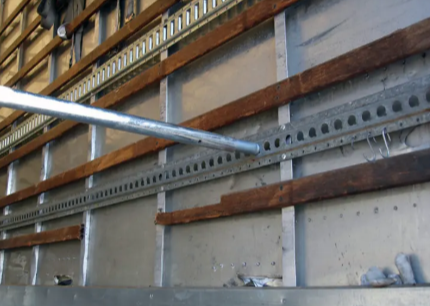What is the Weight Capacity of a Standard Shoring Bar?

A shoring bar is a cargo restraint tool used in trucks, trailers, and shipping containers to secure loads and prevent them from shifting during transit. By bracing against the trailer or container walls, it helps maintain load stability, reduces the risk of damage, and improves overall safety. One of the most important specifications to consider when selecting a shoring bar is its weight capacity.
Understanding Shoring Bar Weight Capacity
The weight capacity, often referred to as the working load limit (WLL), is the maximum load a shoring bar can safely restrain without risk of failure. Manufacturers determine this rating through testing under specific conditions, ensuring the bar can withstand forces caused by sudden braking, turning, or uneven road surfaces. Using a shoring bar within its rated capacity is essential for safe transport and compliance with load restraint guidelines.
Typical Weight Capacities for Standard Shoring Bars
Shoring bars come in different strengths to suit various transport applications:
Light-Duty Shoring Bars
Often used for smaller loads or lighter cargo, these typically have a WLL between 200–300 kg. They are ideal for less demanding restraint tasks.
Medium-Duty Shoring Bars
A common choice for general freight, these can handle a WLL of 300–500 kg, making them suitable for most transport operators.
Read Also: How Custom Printing Is Powering India’s Next Apparel Boom: Profits, Tech & Street Style Trends
Heavy-Duty Shoring Bars
Built for high-capacity loads, heavy-duty options can have WLLs exceeding 500 kg. For example, an adjustable shoring bar with a robust locking mechanism and steel construction can provide strong, reliable cargo restraint for heavy or irregular loads.
Factors That Can Affect Load Capacity
While a manufacturer’s rating gives a reliable guide, several real-world factors can influence performance:
- Cargo weight distribution – Uneven loads can reduce effectiveness.
- Material type – Steel bars typically have higher capacities than aluminium.
- Locking mechanism – Ratchet and lever types offer different holding strengths.
- Trailer or container condition – Damaged or weak walls may not hold bars securely.
How to Choose the Right Shoring Bar Capacity for Your Needs
When selecting a shoring bar, consider:
- The type and weight of your cargo.
- Whether you’ll use multiple bars for additional stability.
- The transport conditions (smooth sealed roads vs. rough terrain).
Choosing a bar with a slightly higher WLL than your estimated need provides a useful safety margin.
Safety Tips for Using Shoring Bars
- Inspect bars before each use for cracks, bends, or worn locking points.
- Never exceed the manufacturer’s rated capacity.
- Ensure the bar is firmly locked into place before departure.
- Use multiple bars for large or irregular loads to increase stability.
Key Takeaways
Knowing the weight capacity of your shoring bar is critical for safe and secure cargo transport. By choosing the right capacity for your load type, considering real-world conditions, and following proper safety practices, you can minimise the risk of load shift and damage during transit.




